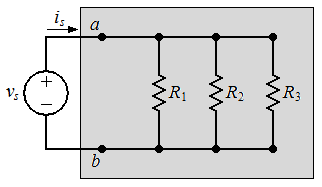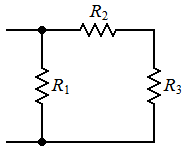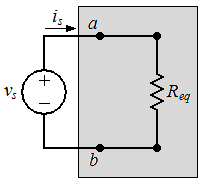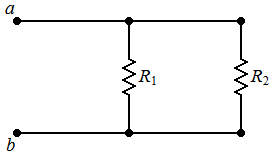Parallel-connected circuit elements have the same voltage across their terminals. The circuit shown in the figure below illustrates resistors connected in parallel.

Don't make the mistake of assuming that two elements are parallel connected merely because they are lined up in parallel in a circuit diagram. The defining characteristic of parallel-connected elements is that they have the same voltage across their terminals. In the next figure, it can be seen that R1 and R3 are not parallel connected because, between their respective terminals, another resistor dissipates some of the voltage.

Resistors in parallel can be reduced to a single equivalent resistor using Kirchhoff's current law and Ohm's law, as can now be demonstrated. In the circuit shown in the first figure, the currents i1, i2, and i3 correspond to the resistors R1 through R3, respectively. Also, the positive reference direction for each resistor current is designated as being down through the resistor, that is, from node a to node b. From Kirchhoff's current law:
The parallel connection of the resistors means that the voltage across each resistor must be the same. Hence, from Ohm's law:
i1R1 = i2R2 = i3R3 = vs
Therefore,
Substituting Eq2 into Eq1 yields:
from which:
Eq3 shows that the three resistors in the circuit shown in the figure at the top can be replaced by a single equivalent resistor. The circuit shown in the following figure illustrates the substitution.

For k resistors connected in parallel, Eq3 becomes:
Note that the resistance of the equivalent resistor is always smaller than the resistance of the smallest resistor in the parallel connection. Sometimes, using conductance when dealing with resistors connected in parallel is more convenient. In that case, Eq4 becomes:
| Geq = | | G i = G1 + G2 + ⋅⋅⋅ + Gk |
Many times only two resistors are connected in parallel. The following figure illustrates this case:

The equivalent resistance is calculated from Eq4:
or:
Thus for just two resistors in parallel the equivalent resistance equals the product of the resistances divided by the sum of the resistances. Remember that this result can only be used in the special case of just two resistors in parallel.



